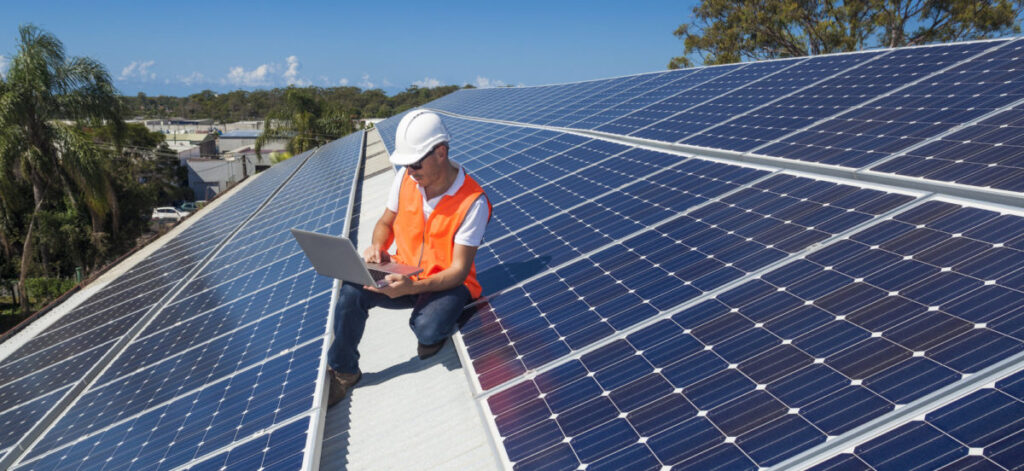Scientists have used different levels of Al₂O₃ and ZnO paraffin wax to improve the electrical and thermal performance of a photovoltaic-thermal (PVT) system. They have also developed a prediction model for this specific combination of hybrid nano phase change materials.
Researchers from Bangladesh and Australia have explored hybrid nano phase change materials (HNPCMs) for PVT applications. They used paraffin wax as a phase change material (PCM), which incorporated different levels of aluminum oxide (Al₂O₃) and zinc oxide (ZnO) nanoparticles. They also developed a prediction model.
“In this study, Al2O3 and ZnO at different concentrations are incorporated with PCM to improve their thermal conductivity and then used in the PVT system to investigate the impact on their performance (electrical and thermal),” the group said. “The hybrid-nano/PCM samples are prepared and their morphology, structure, thermal stability, thermal conductivity and phase change behavior are performed.”
They incorporated the Al2O3-ZnO mixture into the wash at a load of 0.5%, 1% and 2%. The mixture was added to the wax at 70°C and stirred for two hours, using an ultrasonic vibration machine to keep the beaker above the melting point. Finally, they cooled the samples to room temperature.
“A scanning electron microscope (SEM) test was conducted for the morphological analysis of the samples, and the test results show that 2% of the hybrid nanoparticles mixed with PCM showed better bonding with base paraffin wax without any agglomeration… 2% of the hybrid nanoparticle PCM exhibits a higher thermal conductivity of 2.18 W/mK than pure paraffin wax (1.54 W/mK),” the group said. “The outcome shows the gradual increase in thermal conductivity with the addition of hybrid nanoparticles with mass fractions of 0.5, 1 and 2%.”
The researchers built an experimental setup in which HNPCMs were combined with a PVT system. They attached a 20W polycrystalline PV module to a serpentine copper tube with the HNPCMs on the back, with copper tubes under circulating water at a rate of 0.0021 kg/s. Hot water was stored in a thermal energy tank.
The system was installed on the roof of the Rajshahi University of Engineering and Technology in Bangladesh. They also installed two reference systems with the same 20W PV module: one with only the PV panel and the other with only paraffin wax PCM. The measurements were carried out at the end of April 2022, at an irradiation ranging from 400 W/m² to 900 W/m² and an ambient temperature of approximately 26°C.
“Experimental results showed that, compared with PCM alone, the thermal conductivity of HNPCM increased by 24.68%, 28.57% and 41.56% for the incorporation of 0.5%, 1% and 2% hybrid, respectively nanomaterial,” the researchers said. “The electrical efficiency of the PVT/HNPCM and PVT/PCM system improved by 31.46% and 28.70%, respectively, compared to the conventional PV system in this study.”
The group also developed a response surface methodology model (RSM) to “predict and optimize the interaction of operational factors (independent variable) with the response factors (dependent variable).” RSM typically uses statistics and mathematical models to improve and optimize experimental systems.
“After completing the comparisons of experimental results, the error rate for electrical, thermal, and overall efficiency is estimated to be approximately − 1.95% and − 0.57%, − 4.81% and − 1.66%, and − 3, respectively .83% and − 1.24%. for both the PVT/PCM and PVT/HNPCM systems,” the academics said.
They presented their results in “Characterization, optimization and performance evaluation of PCM with hybrid nanoparticles Al2O3 and ZnO for photovoltaic thermal energy storage”, which was recently published in Energy and Built Environment. The research was conducted by scientists from Rajshahi University of Engineering & Technology in Bangladesh and Australia’s Edith Cowan University.
This content is copyrighted and may not be reused. If you would like to collaborate with us and reuse some of our content, please contact: editors@pv-magazine.com.

